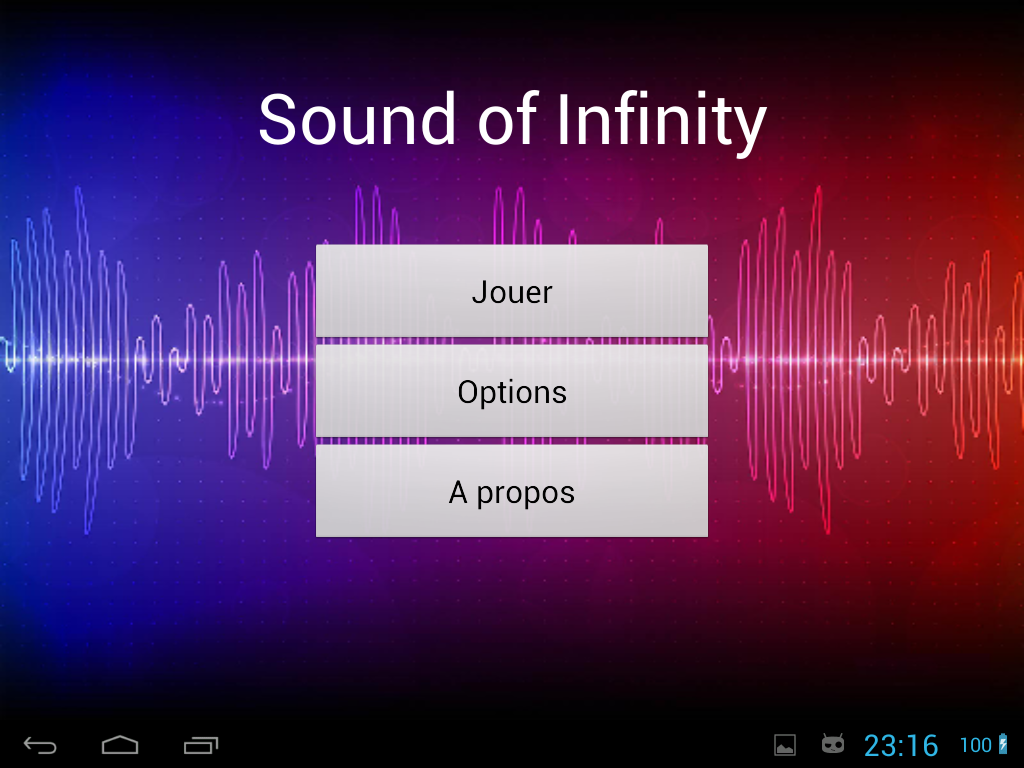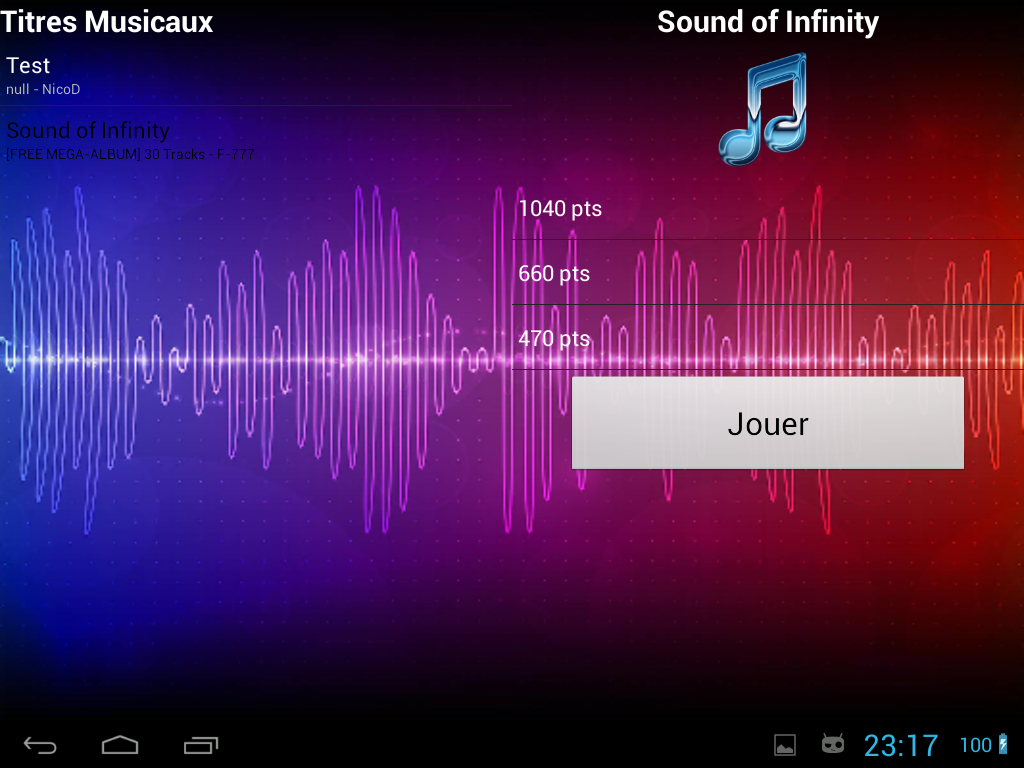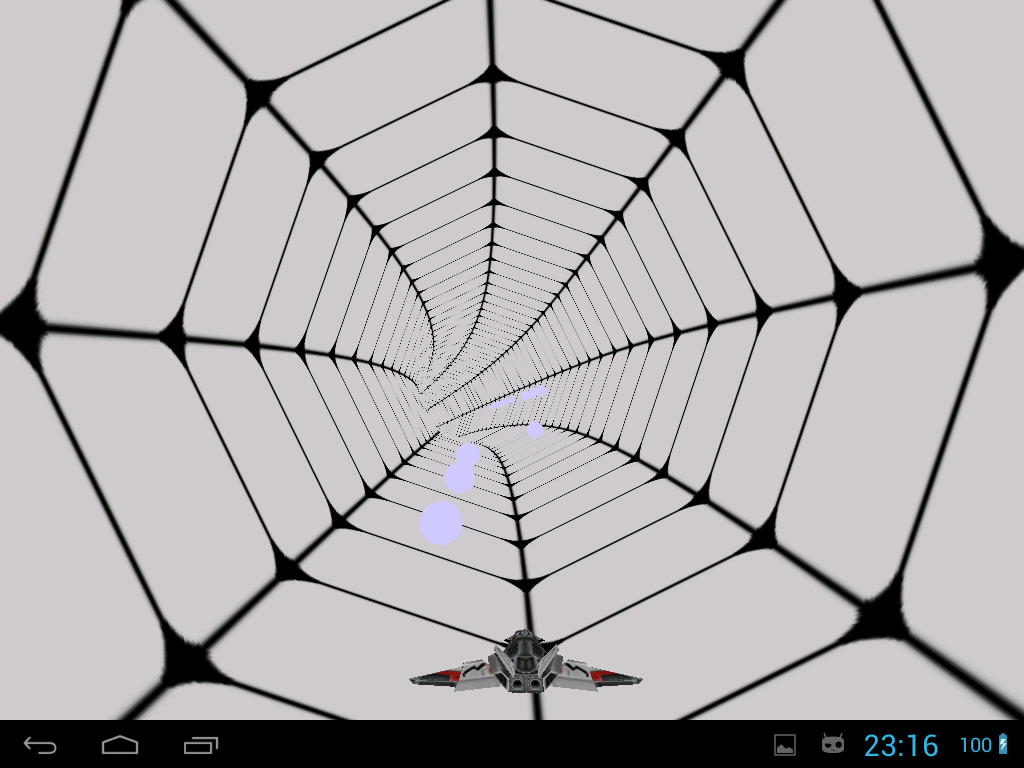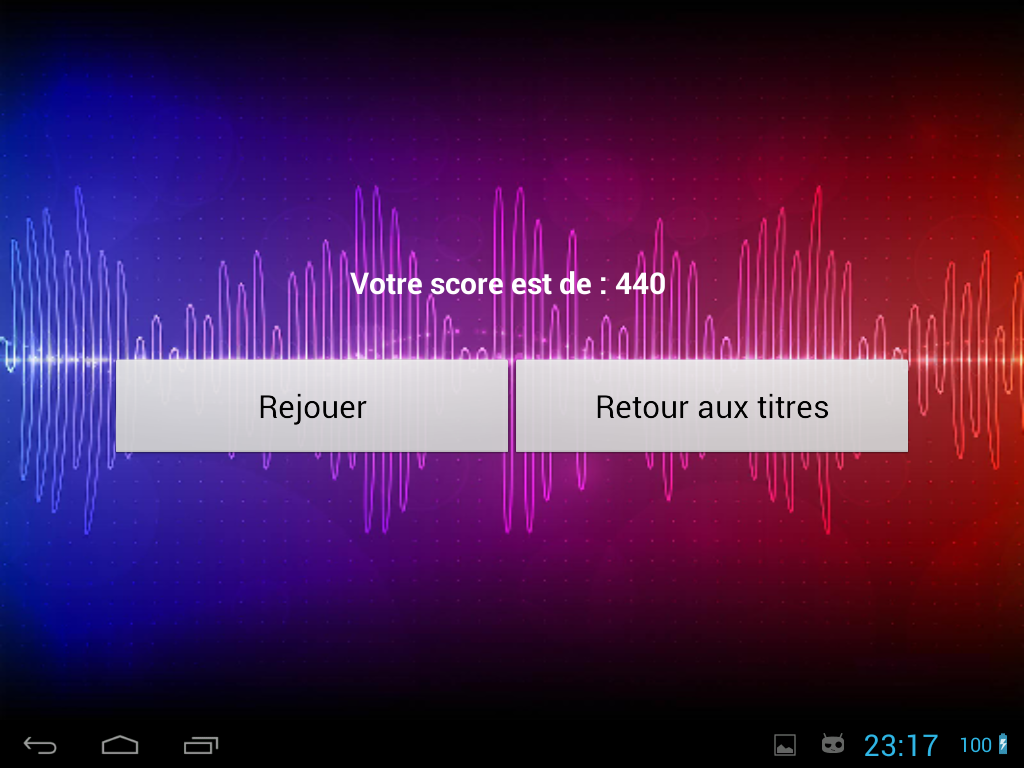This game is in progress. Sorry for my bad english, I'm french.
SubjectThis is my first project on Android. My aim is to create a game which is etablished depending on a song.
I know it's not a revolutionary idea but I think it's a good start. My inspiration come from Audiosurf, Supersonic HD and Music Ride (a game using jPCT-AE).
It's a project for my ingineering school ENSC at Bordeaux, France.
The game's name is inspired from a F-777's song.
Using jPCT-AEI use jPCT-AE for create a random tube where a spaceship come from one side to the other collecting bonus (light blue sphere) placed depending on the notes of the song.
I analyse the song with a FFT previously for detecting the notes.
The tube is created in the application
The spaceship and its texture are imported from a 3DS file.
Currents problemsAt the moment the application work without problem.
The only lack is the optimisation. In fact, my game running with approximatively 45-50 FPS, what is not too bad but not perfect too.
I don't know is it's due to the number of 3D objects or the move's computations.
Some Screenshots



Thanks for watching.